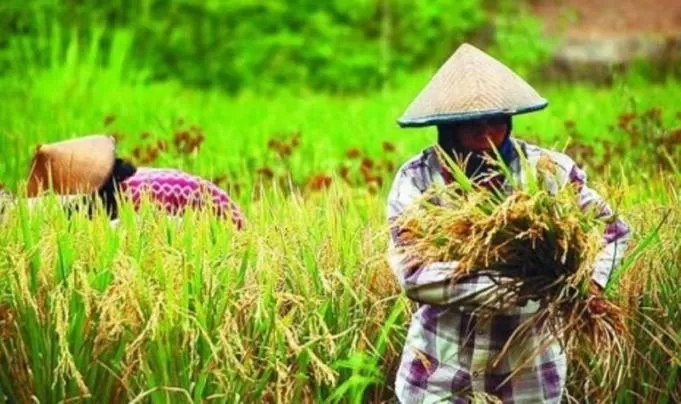The Government is Committed to Achieving Rice Self-Sufficiency
By: Astari Kusuma Dewi
The Indonesian government is committed to achieving rice self-sufficiency in Indonesia. Rice self-sufficiency will make Indonesia an independent country in providing food for the people, and to avoid dependence on imports.
Self-sufficiency is an effort or ability to fulfill one’s own needs. Thus, rice self-sufficiency is the ability of Indonesia to meet domestic rice production needs. Based on the provisions of the Food and Agriculture Organization (FAO) in 1999, a country is said to be self-sufficient if its production reaches 90 percent of national needs. FAO is an organization under the United Nations (UN) that deals with food and agriculture issues. This organization aims to achieve an increase in the level of nutrition and standard of living for humans through food and agriculture management, rural development and the reduction of hunger.
President of the Republic of Indonesia Joko Widodo (Jokowi) is optimistic that in the future Indonesia will be able to achieve rice self-sufficiency. This is because Indonesia has all the potential to meet its own rice needs.
This statement was made by President Jokowi because it has been three years since Indonesia has not imported rice. President Jokowi added that Indonesia should not depend on one food only. Indonesia must be able to maximize various other food potentials.
Optimizing other food potentials is needed to deal with conditions of global uncertainty and the threat of a food crisis that occurs. So that if one of the community’s staple food sources experiences scarcity due to crop failure, epidemics, weather factors, or is hampered during the distribution process, there are still other materials that are useful as substitutes. For information, there are many things that can be developed in Indonesia, such as sago, sorghum, corn, porang, cassava, and others. It is also known that sago and corn are also part of staple foods in several regions in Indonesia because they contain sufficient basic nutrients and are easily found by the public.
Professor of the Faculty of Agriculture, University of Lampung in the field of Agricultural Economics and Natural Resources, Prof. Dr. Bustanul Arifin also agrees with President Jokowi’s optimism that Indonesia will soon be self-sufficient in rice. He argues that Indonesia must be independent in food issues, because there is protectionism from partner countries, where many countries prohibit food exports, and this must be resolved through economic diplomacy.
Protectionism policy, also known as trade protection, is a policy taken by the government of a country to intervene in export and import activities with the aim of protecting certain economic or industrial sectors so that they can compete in the global market and not lose in international competition. Trade protection policies are usually taken to maximize domestic production, expand employment opportunities, and maintain national stability, which can be disrupted if a country is too dependent on other countries in the procurement of food commodities.
Prof. Bustanul Arifin added that the availability of Indonesian rice for the last three years was still relatively safe, after being disturbed by the extreme dry season in 2018. What is even more proud is that since 2018, the Indonesian government has not imported rice.
In 2021, Indonesia’s rice production will reach 31.4 million tons of rice, which is higher than the consumption figure of 30 million tons. Productivity also increased by 1.96% from the previous 5.11 tons/ha to 5.23 tons/ha. For 2022, it is known that until May, rice production has reached 13.5 million or half of the annual demand. The price of medium rice is also stable at around Rp.11,800/kg for the last two years.
The main problem with the availability of rice in Indonesia is the reduced area of rice harvested by 245,000 ha or about 2.34%. The decline in the area of agricultural land is caused by various factors, the main one being the incessant conversion of land functions. Land conversion or land conversion is the change from one land use to another. For example, land that was previously used as agricultural land is converted into oil palm plantations, factory construction, or residential development for residents. This of course must be resolved cross-sectoral by involving the Regional Government, so that the area of agricultural land does not continue to decrease.
For that Prof. Bustanul Arifin suggested that the Government of Indonesia should prepare various anticipatory strategies and policy steps to deal with the threat of food crises in the future. He gave some suggestions as alternative solutions to overcome them.
For the short term, he recommends providing Direct Cash Assistance
